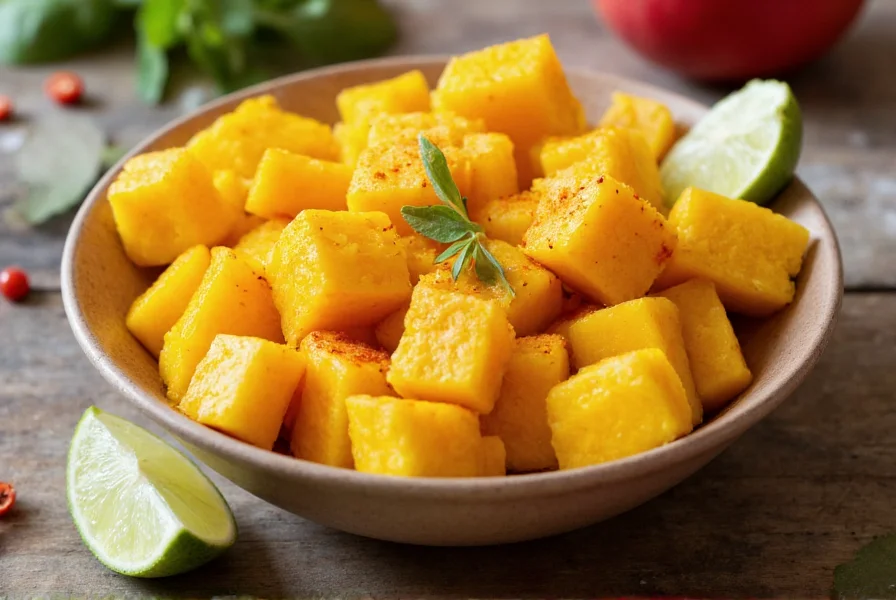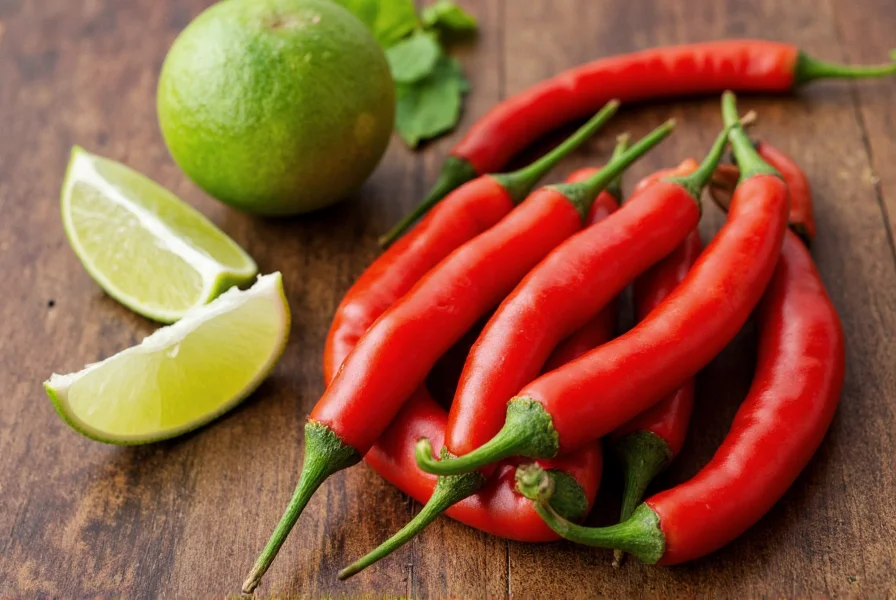For centuries, culinary traditions across Mexico, Southeast Asia, and South America have relied on the dynamic interplay between chili and lime. This flavor pairing isn't just a cultural coincidence—it's grounded in food science. When capsaicin from chilies binds to TRPV1 receptors on your tongue, it creates that familiar heat sensation. Lime's citric acid simultaneously activates sour receptors while helping dissolve capsaicin molecules, creating a refreshing counterpoint that prevents palate fatigue.
The Science Behind the Perfect Pairing
Understanding why chili and lime work so well together requires examining their chemical interaction. Capsaicin, the compound responsible for chili heat, is hydrophobic (water-repelling) but dissolves in acids. Lime juice's low pH (around 2.0-2.8) helps break down capsaicin molecules, providing immediate relief from intense heat while preserving flavor complexity. This chemical synergy allows both ingredients to shine without overwhelming the palate.

Global Culinary Traditions
This flavor combination appears in diverse culinary traditions worldwide, each with distinctive applications:
| Region | Signature Dishes | Unique Preparation |
|---|---|---|
| Mexico | Elote (street corn), Tajín-seasoned fruit | Dried chili powder mixed with lime juice and salt |
| Thailand | Som tum (green papaya salad), Yam woon sen | Fresh bird's eye chili with key lime juice |
| Peru | Ceviche, Aji sauce | Lime-marinated seafood with ají amarillo |
Practical Applications in Modern Cooking
Professional chefs and home cooks can leverage this flavor pairing in numerous ways. The key is understanding how to balance the elements for different applications:
For Savory Dishes
When preparing grilled meats or vegetables, create a finishing sauce by combining freshly squeezed lime juice with minced serrano peppers and a touch of honey. The acidity cuts through fat while the heat enhances umami flavors. For bean dishes or soups, add lime juice at the end of cooking to preserve its bright flavor, then sprinkle with finely diced jalapeño for controlled heat.
For Sweet Applications
The chili-lime combination transforms fruit preparations. Toss watermelon cubes with lime zest, a pinch of cayenne, and Tajín seasoning for a refreshing summer treat. For mango, use a milder chili like guajillo powder mixed with lime juice and honey to create a balanced sweet-heat profile that complements the fruit's natural sugars.

Creating Balanced Chili-Lime Seasoning
Homemade chili-lime seasoning offers superior flavor to store-bought versions. The ideal ratio depends on your application:
- For dry rubs: 3 parts chili powder, 1 part lime zest, 2 parts sea salt
- For wet applications: 2 parts fresh lime juice, 1 part minced fresh chili, 1 part neutral oil
- For fruit: 4 parts lime juice, 1 part mild chili powder, pinch of salt
Always add salt to enhance both the heat perception and citrus brightness. The salt ions help release flavor compounds from both ingredients, creating a more rounded taste profile.
Common Mistakes to Avoid
Many home cooks make these critical errors when working with chili and lime:
- Adding lime too early: Citric acid breaks down when heated, losing its bright character. Always add lime juice in the final stages of cooking
- Using bottled lime juice: Freshly squeezed lime contains volatile compounds that create the characteristic aroma. Bottled versions lack these nuances
- Overpowering with chili: Start with small amounts of chili and build gradually. You can always add more heat, but you can't remove it
- Mixing incompatible chilies: Not all chilies work equally well with lime. Avoid extremely smoky varieties like chipotle which can clash with citrus
Health Benefits of the Dynamic Duo
Beyond flavor, chili and lime offer complementary health benefits. Capsaicin boosts metabolism and has anti-inflammatory properties, while lime provides vitamin C and antioxidants. Together, they create a synergistic effect—vitamin C enhances the absorption of capsaicin's beneficial compounds. This pairing also encourages reduced salt usage, as the flavor complexity satisfies taste receptors with less sodium.
Perfect Pairings: Dishes That Shine with Chili and Lime
Certain dishes particularly benefit from this flavor combination:
- Fish tacos: The acidity cuts through fried batter while heat enhances seafood flavors
- Black bean soup: Lime brightens earthy beans while chili adds dimension
- Mango sorbet: Creates a sophisticated sweet-heat profile that cleanses the palate
- Grilled pineapple: Caramelized sugars balance the heat and acidity beautifully
Mastering the Balance
The secret to perfect chili-lime dishes lies in understanding your ingredients' variables. Different limes (Persian vs. Key) have varying acidity levels, while chilies range dramatically in heat intensity. Always taste as you go, adjusting incrementally. For consistent results, measure ingredients by weight rather than volume, especially when working with fresh chilies where size and heat can vary significantly.
Frequently Asked Questions
What's the best type of chili to use with lime?
Serrano and jalapeño peppers provide the ideal balance of heat and flavor that complements lime without overwhelming it. For milder applications, try poblano or Anaheim peppers. Avoid extremely smoky chilies like chipotle which can clash with citrus notes.
Can I use lemon instead of lime with chili?
While lemon can work in some applications, it creates a different flavor profile. Lime's lower pH and distinct aromatic compounds interact more effectively with capsaicin. The unique terpenes in lime (like limonene) enhance the perception of chili heat while providing a brighter, cleaner finish compared to lemon.
How do I reduce the heat if I've added too much chili?
Adding more lime juice is the most effective solution, as citric acid helps dissolve capsaicin molecules. Dairy products like yogurt or sour cream also help, but they alter the dish's character. Never add water—it spreads the capsaicin without neutralizing it. For dry applications, increase the salt content slightly, which can help balance perceived heat.
Why does my chili-lime dish taste bitter when I cook it?
Bitterness typically occurs when lime juice is exposed to high heat for too long. Always add lime juice during the final 5-10 minutes of cooking. The zest contains aromatic oils that provide citrus flavor without the acidity that breaks down under heat. For cooked applications, use zest during cooking and reserve juice for finishing.
Can I preserve chili-lime flavor in canned or bottled products?
Fresh flavor degrades over time in preserved products. For best results in canning, add lime juice at the recommended acidity levels for safety, but understand the bright notes will mellow. Freeze fresh chili-lime mixtures in ice cube trays for longer-lasting flavor. Commercial products often use lime oil rather than juice to maintain consistent citrus notes during shelf life.











 浙公网安备
33010002000092号
浙公网安备
33010002000092号 浙B2-20120091-4
浙B2-20120091-4